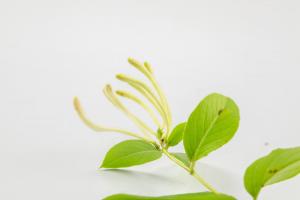What to Put Underneath Plant Pots
If you're an avid gardener or a plant enthusiast, you know that there's more to taking care of plants than just watering them. One important aspect to consider is the material you put underneath the plant pots. This article will explore some of the options for what to put under plant pots, their benefits, and how to decide which option is best for your plants.
The Importance of Plant Pot Drainage
Before we dive into what to put under plant pots, let's first discuss why it's important to have proper drainage. When you water your plants, excess water needs to flow out of the pot to prevent the roots from sitting in water. If there's no drainage, the soil can become waterlogged, leading to root rot and other problems.
So, what can you put under the plant pot to ensure proper drainage?
Option 1: Saucers
The most common option for what to put under plant pots is a saucer, which is a shallow dish designed to sit underneath the pot. Saucers catch excess water, preventing it from spilling out onto your floors or furniture. They come in various sizes and materials, including plastic, ceramic, and metal. Saucers are especially useful if you have houseplants that you need to move around, as they catch any excess water that may leak out during transport.
Option 2: Pot Feet or Risers
If you want to elevate your plant pot off the ground and improve its drainage, you can use pot feet or risers. These are small, elevating devices that you place underneath the pot. They allow air to circulate underneath the pot, which can help to prevent water from pooling underneath. Pot feet or risers are also helpful if you have plants that prefer drier soil conditions or are prone to root rot.
Option 3: Gravel or Stones
Another option for what to put under plant pots is gravel or stones. These materials serve a similar purpose to pot feet or risers in that they elevate the pot, allowing air to circulate underneath. Additionally, the gravel or stones help to create space for excess water to flow out of the bottom of the pot. However, keep in mind that gravel or stones can become dirty over time and may require periodic cleaning.
Option 4: Root Barrier Cloth or Plastic
If you're worried about plants with invasive roots, you may want to consider using root barrier cloth or plastic underneath your plant pots. These materials help to prevent roots from growing out of the bottom of the pot and potentially damaging your floors or patio. Just be sure to use a breathable material to avoid suffocating the roots.
How to Choose the Right Option for Your Plants
Now that you know your options, how do you decide which one is best for your plants? Consider factors like the size and material of the pot, the type of plant you're growing, and the conditions in which it will be growing. For example, if you have a large plant, a saucer may not be sufficient to catch all the excess water, and you may need to consider using pot feet or risers. Alternatively, if you have a plant that thrives in drier soil conditions, gravel or stones may be the best option.
Ultimately, the goal is to ensure that your plants have proper drainage to prevent root rot and other problems. With so many options for what to put under plant pots, it's easy to find the right one for your specific needs.
Conclusion
When it comes to taking care of plants, little details like what to put under plant pots can make a big difference. Whether you go the traditional route with saucers or choose something more elevated like pot feet or gravel, be sure to choose an option that meets the needs of your specific plant. With proper drainage and care, your plants will thrive and bring joy and beauty to your home or garden for years to come.

 how many times do yo...
how many times do yo... how many planted tre...
how many planted tre... how many pine trees ...
how many pine trees ... how many pecan trees...
how many pecan trees... how many plants comp...
how many plants comp... how many plants can ...
how many plants can ... how many plants and ...
how many plants and ... how many pepper plan...
how many pepper plan...






























